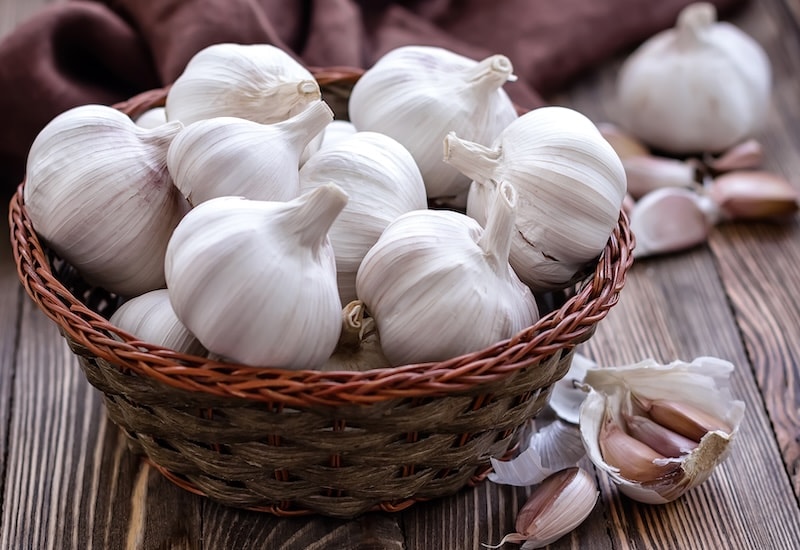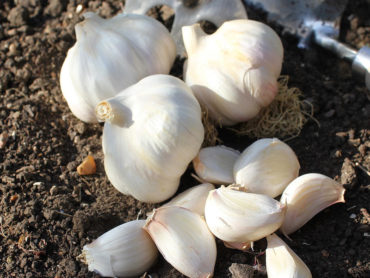Garlic is an essential ingredient of any vegetable patch. It’s also an attractive addition to your kitchen when dried and plaited. Here’s how to plant and grow your own delicious garlic bulbs, along with advice on the best hardneck and softneck varieties to choose.
What’s the difference between hardneck and softneck garlic?
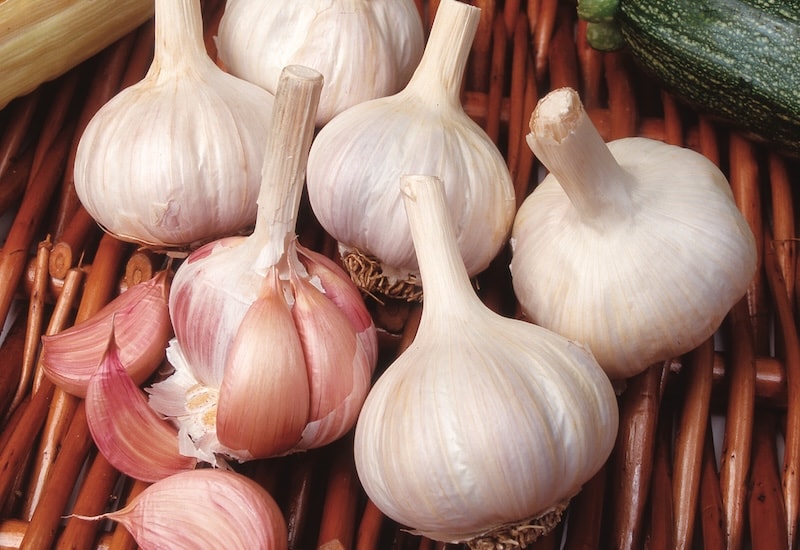
Image: Garlic ‘Flavor’ (Spring Planting) from Suttons
There are 2 types of garlic – hardneck and softneck varieties. The main difference is their level of hardiness. Hardneck garlic is very hardy while softneck varieties are less hardy but can be stored for longer.
Hardneck varieties are the closest to wild garlic. The plants produce a flowering stem, known as a scape, which should be removed. The scapes are edible and can be used in stir fries, salads and sauces. Extremely hardy, hardneck garlic produces large cloves but can’t be stored for long periods. Despite this, it’s often chosen for superb flavour. Garlic ‘Edenrose’ is lauded as one of the most flavoursome varieties you can grow, while ‘Flavor’ is an Italian pink garlic that has been bred for reliable storage.
Softneck garlic varieties are less hardy and require a cloche in the coldest and most exposed areas. Generally the flavour is a little milder than hardnecks, and they produce more numerous, but smaller, cloves. They also store really well. Garlic ‘Germidour’ produces mild, purple-tinged cloves, while ‘Messidrome’ has excellent resistance to disease.
When should I plant my garlic?
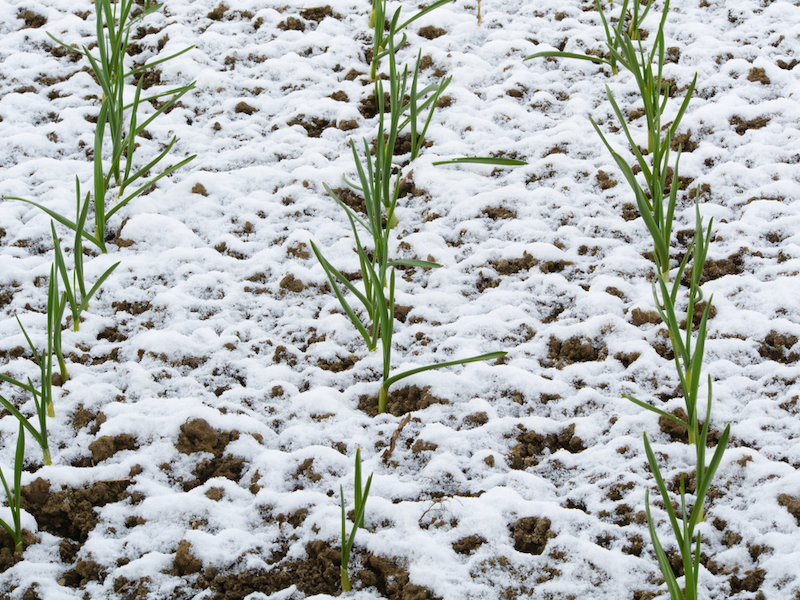
Image: Shutterstock/StMilan
There are spring planting and autumn planting garlic varieties, so you can choose when you have space to plant your crop. Most garlic is planted in the autumn and benefits from a period of cold over the winter, although a few special varieties can be planted in spring. Make sure you plant your garlic no later than March.
How to plant garlic
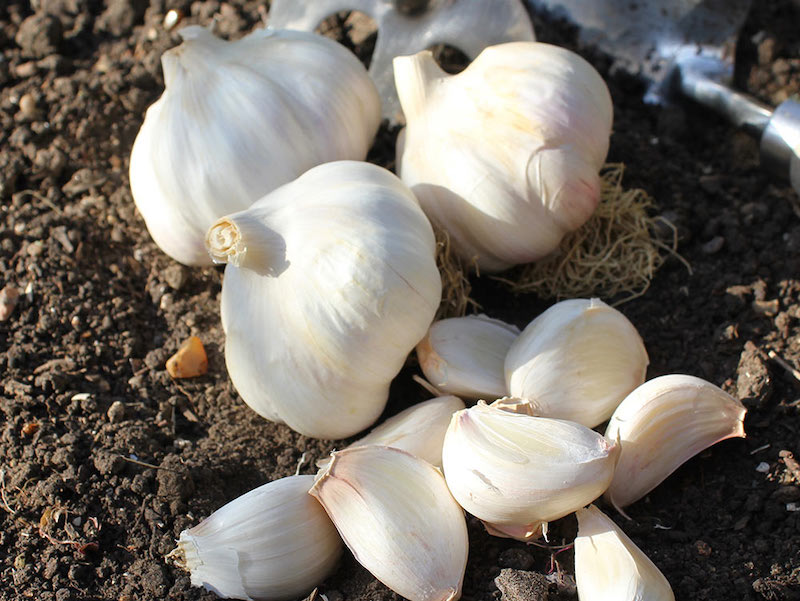
Image: Garlic ‘Carcossonne Wight’ from Suttons
Garlic is easy to grow, requiring only a sunny position and well-drained soil. Before you begin, prepare the ground by mixing in plenty of good quality compost. You should keep the bulbs intact until the last minute or they’ll dry out. When you’re ready to plant, break the bulb up and place each clove 3-4cm (1-2″) below the surface, root down and pointy end up. The cloves should be 15cm apart with approximately 15-20cm (6-8″) between each row.
How to care for garlic
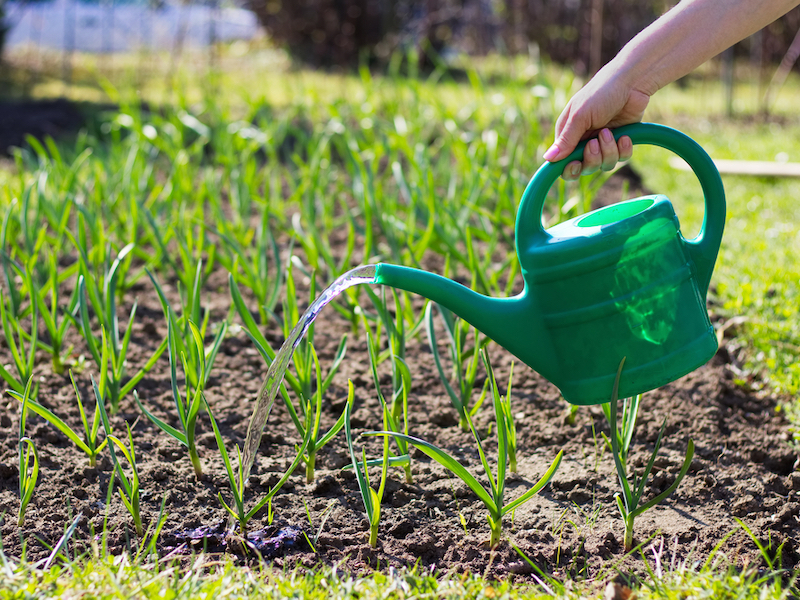
Image: Shutterstock/Encierro
To get the best results and highest yields, you’ll need to water, feed and keep your garlic plants free of weeds. In the growing season you should water your garlic during dry periods, but stop watering completely during the last few weeks of their growth. In early spring, apply a high potash fertiliser to give your plants a boost as the weather begins to warm up.
When can I harvest my garlic?
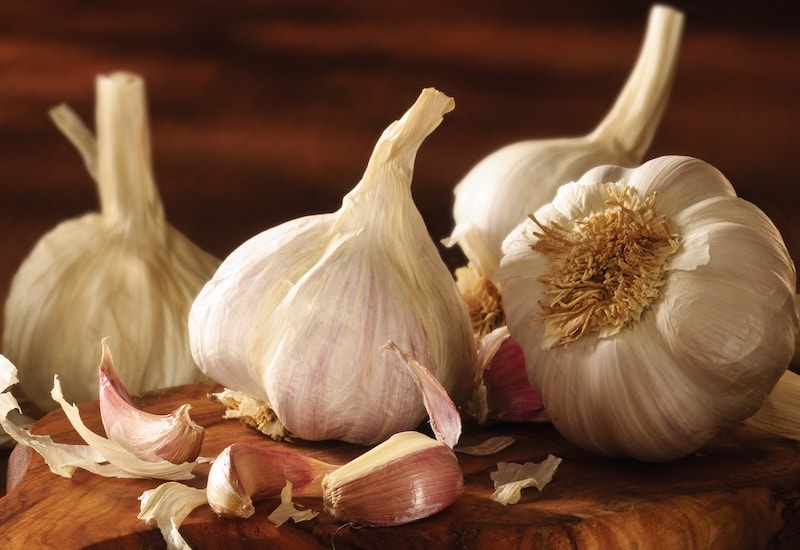
Image: Garlic ‘Picardy Wight’ (Spring Planting) from Suttons
Hardneck varieties are ready to lift when the leaves start to change colour, and softneck varieties are ready when the leaves go floppy and lie on the ground. Your garlic will tell you when it’s time to be harvested. Too early and you’ll miss the final growth spurt. Too late and the bulbs will rot in the ground. As a rule of thumb, autumn planted garlic is roughly ready to pick from early to late summer. Early spring planted garlic will roughly be ready to pick in late summer.
How to store garlic
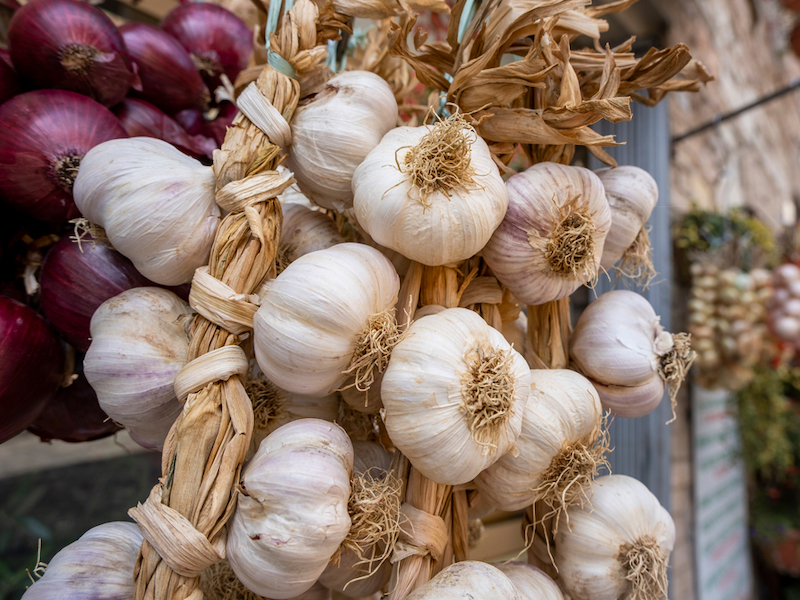
Image: Shutterstock/Tjeerd Kruse
If the sun is shining, leave your garlic to dry out on the ground after pulling it up. If the rain comes or the weather is too damp, place your garlic in a greenhouse or shed to dry out under shelter.
Garlic can be plaited once completely dry to create an attractive hanging display for inside the kitchen. Alternatively, store your dry garlic bulbs in a cool dry place at 5-10℃ for use over the winter.
Can I grow garlic in pots?
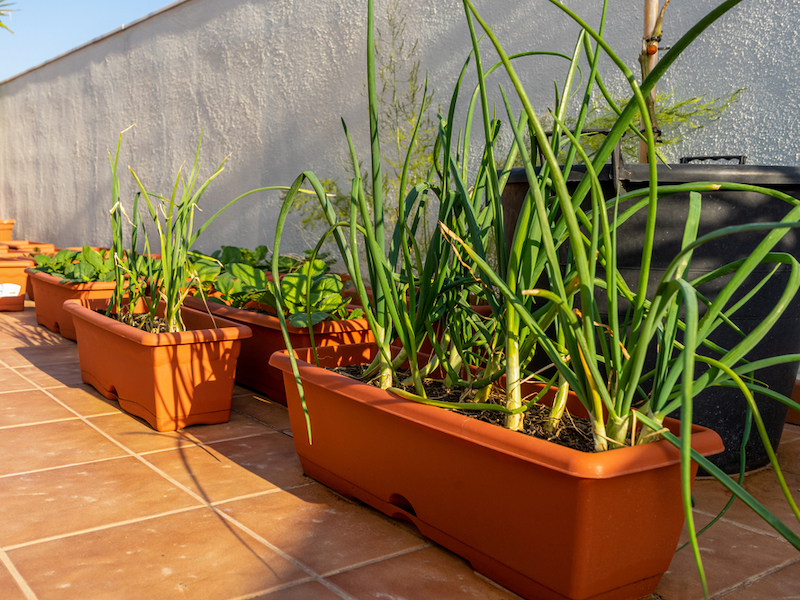
Image: Shutterstock/andres barrionuevo lopez
You can grow garlic very successfully in pots and containers on the patio. Plant three cloves to a 15cm (6″) pot, six cloves to a 20cm (8″) pot, and nine cloves to a 25cm (10″) pot. Keep the containers well-watered and stand them outside in a sunny spot through the growing season. Make sure your growing medium contains plenty of organic matter and horticultural grit to encourage good drainage and prevent the pots from becoming waterlogged. Alternatively, try growing your garlic in a raised bed.
We hope we’ve answered all your questions about growing garlic. A low-maintenance crop that takes up very little space, the health benefits of garlic make it a really worthwhile thing to grow. For more advice on growing your own fruit, vegetables and flowers, visit our growing guides now.
Lead image: Garlic ‘Cledor’ (Spring Planting) from Suttons

